This year marks 250 years since the birth of Jane Austen. We asked Robert Morrison, author of The Regency Revolution: Jane Austen, Napoleon, Lord Byron and the Making of the Modern World, to tell us a little more about how the amazing city of Bath came to feature in Austen’s novels and what life looked like at the time.
Jane Austen spent the spring of 1799 at 13 Queen Square in Bath, where she and her mother had two generously-sized rooms on the second floor. Just twenty-three years old at the time, Austen had stayed in Bath before and had good reason for wanting to visit again, as she worked on the novel that became Northanger Abbey, the first half of which she sets in the city.
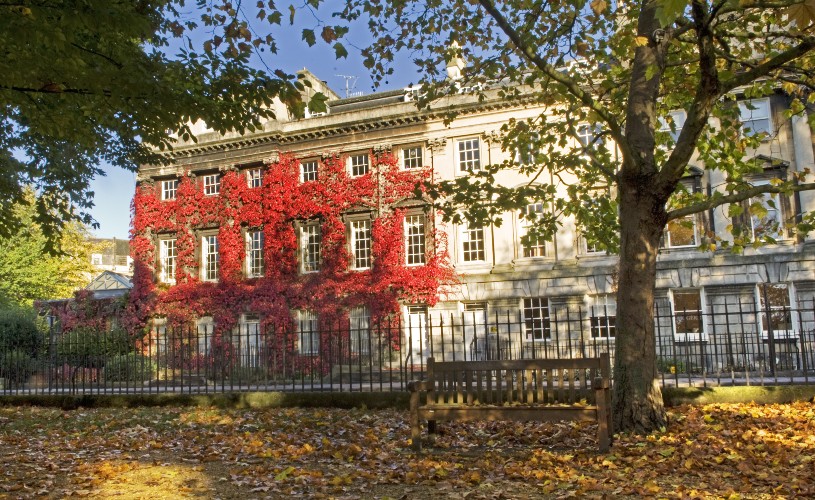
Image - Queen Square
A parody of the fashionable Gothic fiction of the 1790s, the novel’s heroine, seventeen-year-old Catherine Morland, is excited to visit Bath, and at first she enjoys its walks, entertainments, assemblies, and shops. But after several weeks and some unpleasant encounters, Catherine leaves the city without regret. Austen’s own experiences of Bath are often thought to parallel Catherine’s.
It was a city she sometimes found pleasant and even exciting, but after moving there with her family in 1801, she grew especially dissatisfied with Bath society, and was happy to move away in 1806.
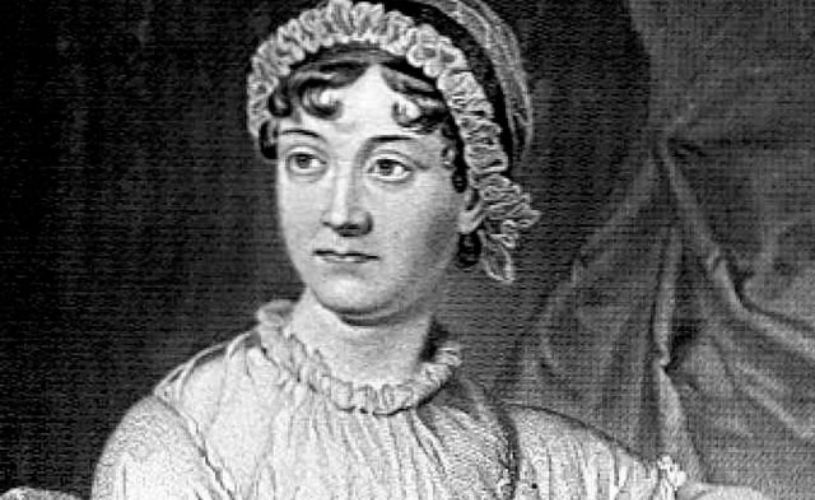
Image - Jane Austen
Austen’s ambivalent attitude toward Bath is evident in all six of her published novels too, with the city often portrayed as a place of courtship and conquest. Sense and Sensibility features a libertine named John Willoughby. Marianne Dashwood, one of the novel’s two leading women, falls passionately in love with him, and he seems to reciprocate her affection. But only six months before meeting Marianne, Willoughby was in Bath, where he seduced and then abandoned a young woman named Eliza Williams.
Another rake, George Wickham from Pride and Prejudice, carries on a flirtation with Elizabeth Bennet, but ends up running off with and then marrying Elizabeth’s youngest sister, hot-blooded, empty-headed Lydia. When, famously, Elizabeth marries Mr Darcy, he can reconcile himself to occasional visits from Lydia, but he cannot extend the invitation to Mr Wickham, who fittingly goes off to enjoy himself in Bath or London.
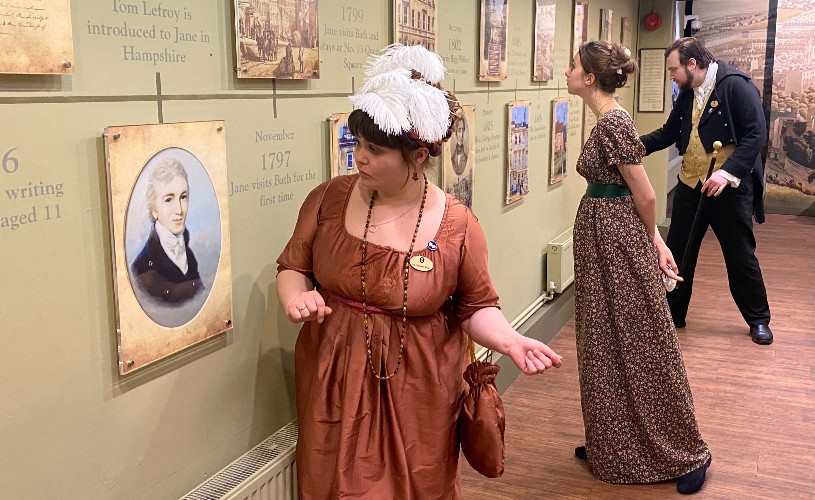
Image - Jane Austen Centre
In other Austen novels, Bath is a place for the wealthy. In Mansfield Park, Mrs Rushworth leaves her home at Sotherton Court and, along with her maid and footman, moves to Bath, where she enjoys praising the wonders of Sotherton at her evening parties.
In Emma, Augusta Hawkins has a claimed fortune of approximately £10,000. A substantial sum, but well below the wealth of the heroine Emma and her hypochondriac father. Having spent part of every winter in Bath, Augusta urges Emma to take her father there to enjoy the waters and the wonderful relief they provide. But she offends Emma by offering to introduce her to good society in Bath, as if the rich Emma needed any help from a parvenu like Augusta.
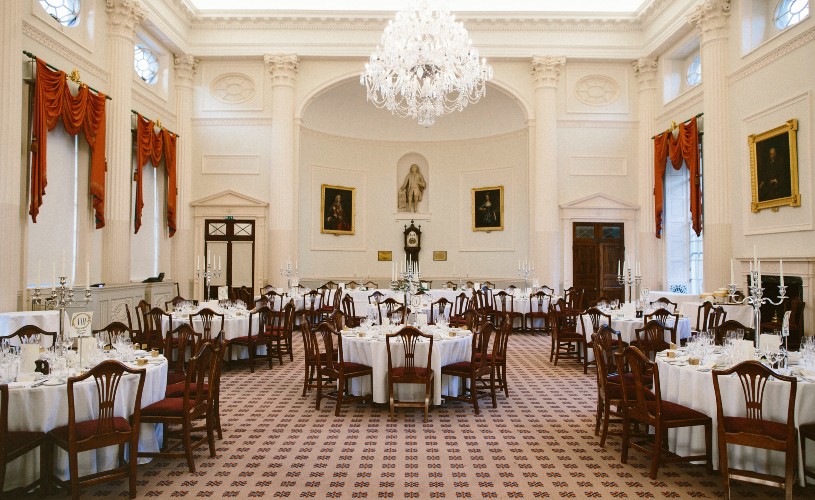
Image - The Pump Room
Persuasion is Austen’s final completed novel. Its second half takes place in Bath. Anne Elliot lives with her family in Kellynch Hall, but her foolish, vain father Sir Walter Elliot has run up large debts and is persuaded to let Kellynch and move to Bath in order to retrench.
Anne dislikes the idea, but like many women in Austen's stories, has no choice. Her godmother Lady Russell, however, is fond of Bath and especially loves its sounds, including the rumble of carts and the cries of milkmen. Before long, Sir Walter and his eldest daughter Elizabeth are settled in a very good house in Camden Place, as befits a family of their consequence. Anne reluctantly joins them there.
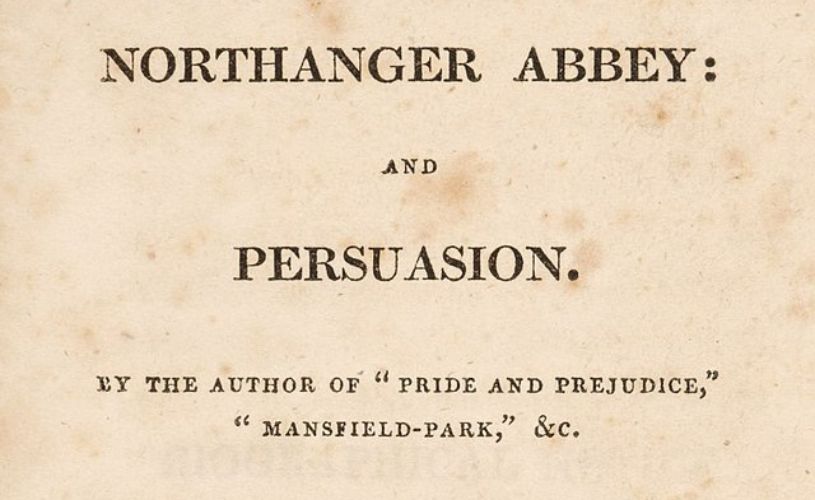
Image - Persuasion title page
Eight years earlier, she had agreed to marry the dashing naval commander Frederick Wentworth. But both Sir Walter and Lady Russell disapproved of the match, and Anne was persuaded to end the engagement. The decision breaks both her heart and Wentworth’s. Then, after a highly successful naval career, he returns to England, now a captain and a wealthy man. In Bath, Anne and Wentworth rekindle their romance.
Sitting at a desk in the White Hart Inn (now demolished, but formerly located at the corner of Westgate Street and Stall Street), Wentworth writes a letter in which he pours out his grief and hope to Anne, before handing it to her and departing. She reads the letter. He loves her as he did more than eight years ago. Her joy is inexpressible, and so is ours. She leaves the White Hart and walks up Union Street. Wentworth joins her and together they wander further up the hill to the Gravel Walk, where at last they open their hearts to one another. It is the most romantic scene in all of Austen, and an apt tribute to a city that so often and variously engaged her imagination.
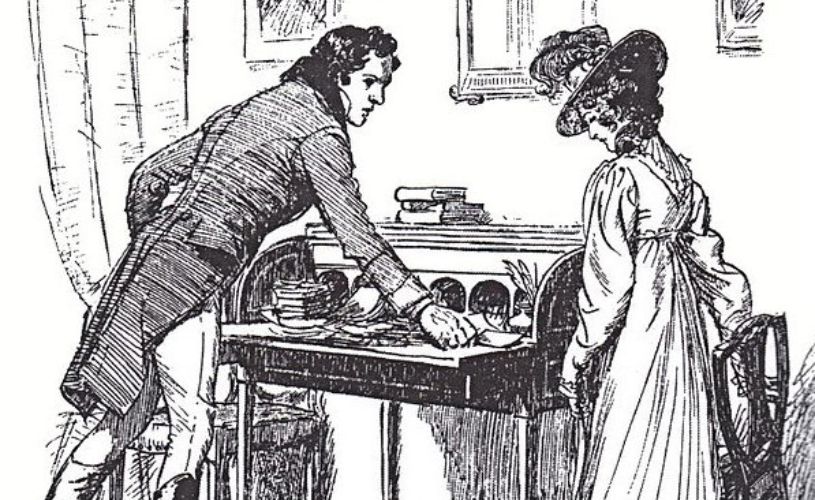
Image - Wentworth and Anne in Persuasion
About the author: Robert Morrison
Robert Morrison is Queen’s National Scholar at Queen’s University in Kingston, Ontario. From 2019 - 2024, he was British Academy Global Professor at Bath Spa University. His most recent book, The Regency Revolution: Jane Austen, Napoleon, Lord Byron and the Making of the Modern World was named by The Economist as one of its 2019 Books of the Year and was shortlisted for the Historical Writers’ Association Crown Award for the best in nonfiction historical writing. In 2011, Morrison’s annotated edition of Jane Austen’s Persuasion was published by Harvard University Press.
Read more:
Related
Comments
Comments are disabled for this post.





